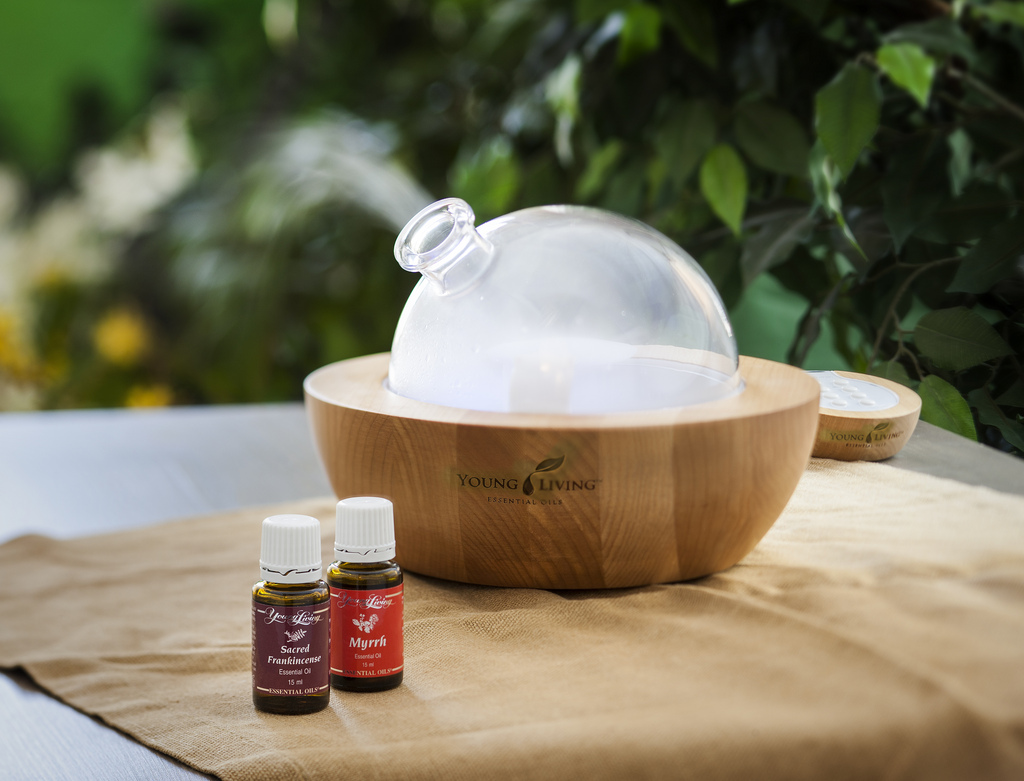
Aromatherapy Oil Diffuser - Start for beginner !
Nowadays, many people prefer using essential oils to scented candles in creating a relaxing ambient environment. Natural, chemical-free and safe, essential oils are widely used for beauty, health and relaxation purposes. One of the best ways to effectively apply essential oils is using essential oil diffusers. Here are some useful information about these versatile tools and how they work.
What is an essential oil diffuser?
Essential oils can be used in various ways for different purposes. Diffusing these amazing natural products into the air is one of the best options to experience their healing benefits. As you breathe in the aromas, you mind and your body both react, thus resulting in psychological and physical benefits, such as: reducing stress, purifying the air, enhancing the immune system and influencing the mood.
In order to do so, we can use an appliance called essential oil diffuser, which is a container of essential oils. This appliance is very versatile because it can work with any type of essential oil.
How does an essential oil diffuser works?
Even though there are various types of essential oil diffusers available, they all works by breaking down the molecules of essential oils, then dispersing them into the air. Natural ozone is released to improve the air’s quality. The particles remain active for several hours.
There are for main types of essential oil diffusers: evaporative, heat, nebulizing and ultrasonic. The first two types are considered less effective because they provide less healing value.
1. Evaporative diffuser
Out of the four types of diffusers, this is the simplest one. Basically, the essential oil is placed on a pad, and then fan is used to blow the air through this pad. This appliance requires minimal supervision: we just let the oil evaporate and diffuse. However, this is regarded rather inefficient.
2. Heat diffuser
Heat diffusers are similar to evaporative ones in the sense that they all cause essential oils to evaporate quickly than normal. However, heat diffusers use low level of heat to create subtle aromas instead of wind blow. A candle or light under a blow that holds the essential oil is used to heat and disperse the oil into the air. Using high levels of heat can result in stronger smells but if the heat is too high, the chemical components of the essential oil can be damaged. We can’t leave the heat diffuser unattended for long so it definitely requires more supervision than the evaporative type. The aroma is not active for long and it can only fill a small environment.
3. Ultrasonic diffuser
In using this type of diffuser water is added to the essential oil. A small disk under the surface of the liquid mixture vibrates at ultrasonic frequencies to create a fine mist of micro-molecules and disperse them into the air. This type of diffuser not only just cleans the air but provides humidity to it also, which is very helpful in the dry season. Only a small amount of oil is needed. However, the aroma does not travel very far and the appliance requires high maintenance.
4. Nebulizing diffuser
A nebulizing diffuser disperses the essential oil into the air and breaks it up in much smaller micro-molecules as compared to those in other type of diffusers. These micro-molecules are easily inhaled and absorbed; therefore this appliance is regarded as providing the most healing benefits. This type of diffuser uses up oil quickly and therefore is considered costly. The benefits it brings, however, can make up for the cost involved.
If you have not used an essential oil diffuser, it is time you try one and experience for yourself the amazing benefits it brings to your mind and your body. Visit http://wellnessappliances.com/ to find more.